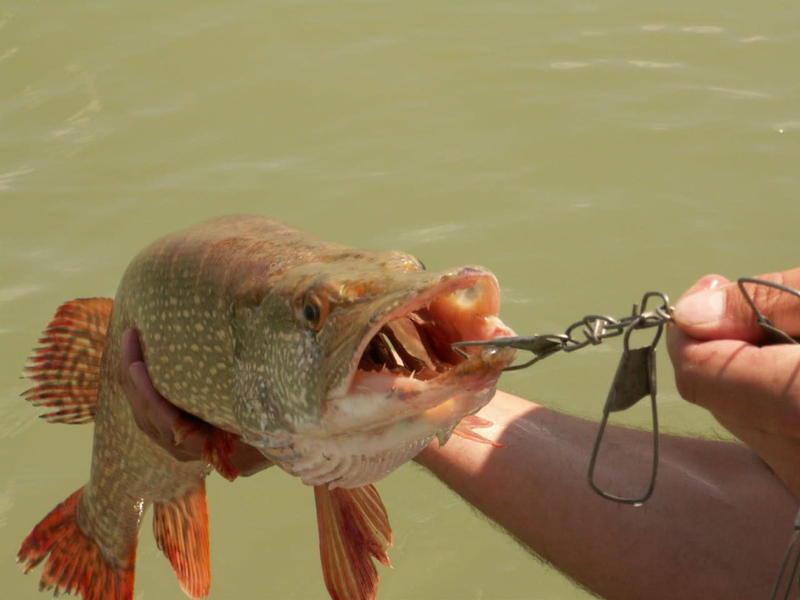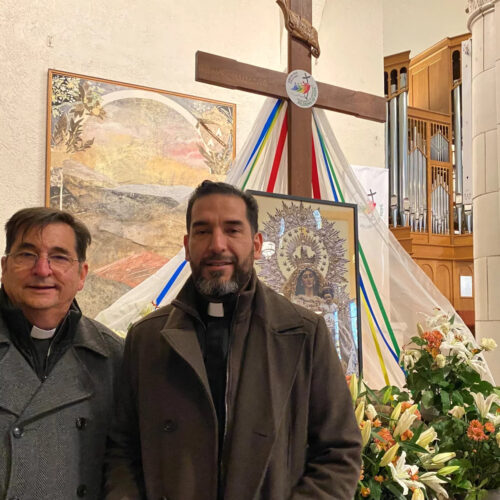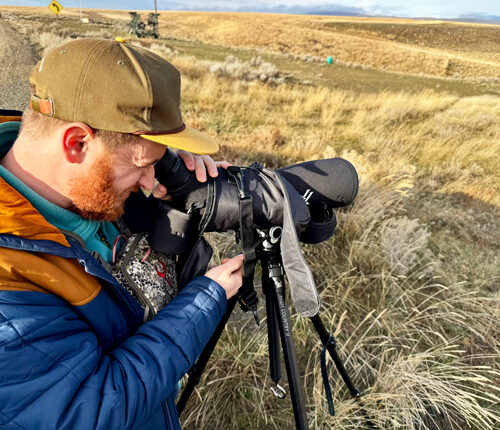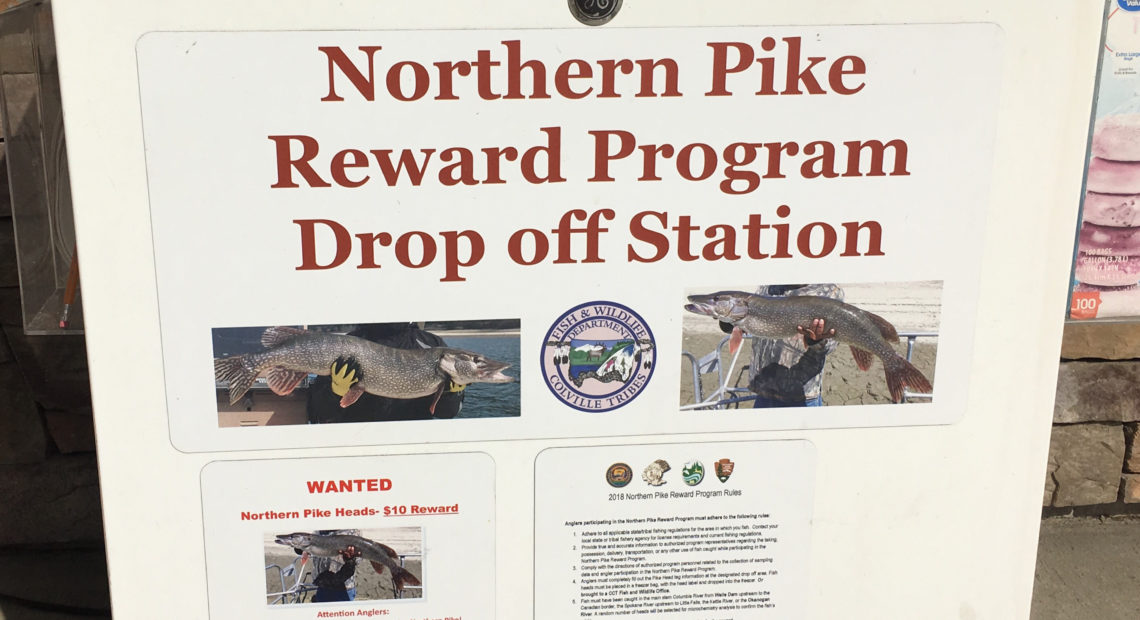
Wanted Dead (Not Alive): Tribes, State Target Invasive Salmon-Killing Pike In Washington
Listen
BY COURTNEY FLATT & DOUG NADVORNICK
Northern pike are some of the most troubling aquatic invasive species in the Northwest. So far, they haven’t made it past Washington’s Lake Roosevelt. Two dams stand in their way. And lots of people trying to stop them.
If the fish make it past Chief Joseph Dam on the Columbia River, they could greatly harm imperiled salmon downstream.
“In a lot of ways, the fight to save the Columbia River as we know it is going to be won and lost on Lake Roosevelt,” said Justin Bush, executive coordinator of the Washington Invasive Species Council.
Three Washington Native tribes are joining two state agencies and two public utility districts in targeting the northern pike — a big species of fish that’s caught for sport in the upper Midwest, but which fisheries biologists say poses huge potential damage to Northwest salmon runs.
Bush says it’s believed the pike was introduced years ago in the Pend Oreille River in northeastern Washington. Now, he says, it has eaten its way downstream to Lake Roosevelt and Grand Coulee Dam.
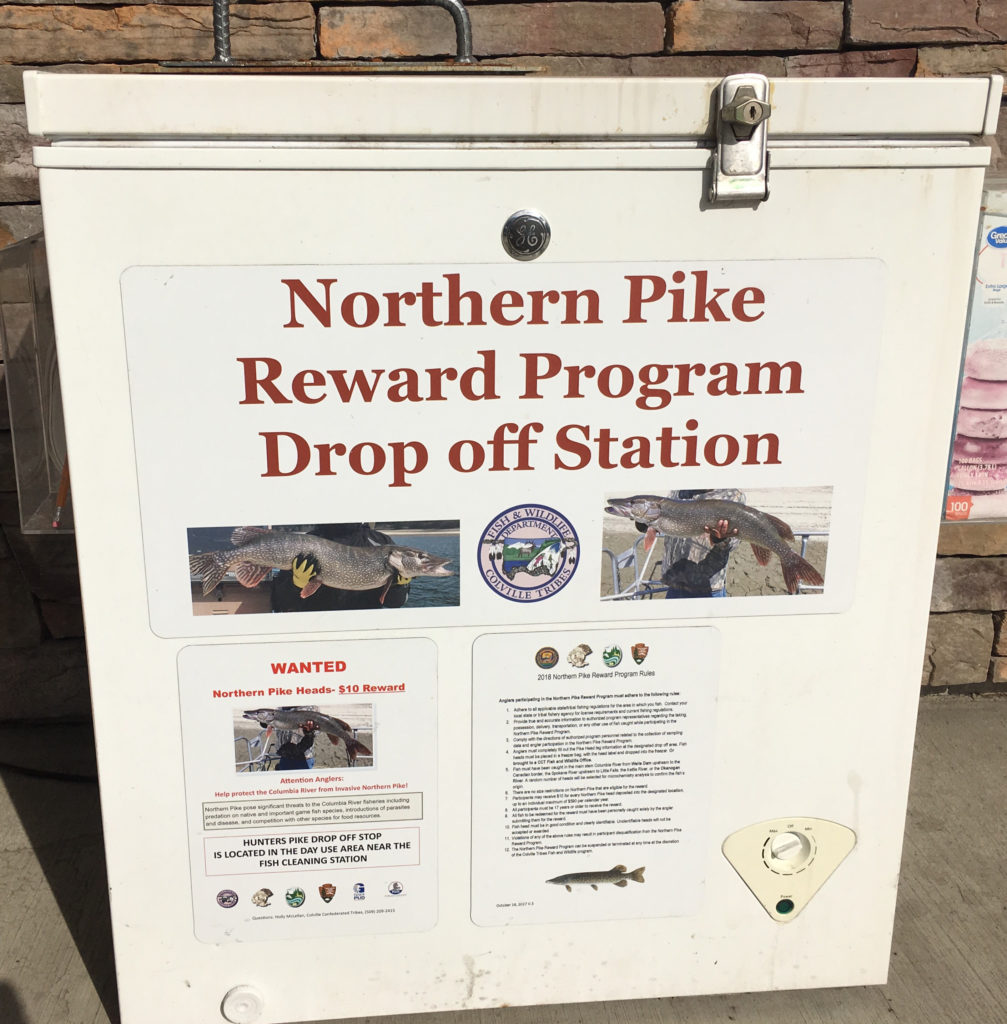
A northern pike dropoff station at the Tribal Trails gas station near Kettle Falls, Washington. CREDIT: Scott A. Leadingham/NWPB
“Northern pike are a problem because they prey on species that we value, such as trout, salmon, steelhead,” Bush said. “In states such as Alaska and California, where northern pike have been introduced, they’ve been able to reduce fish runs to levels that effectively crash entire fisheries.”
Bush says the Spokane, Kalispel and Colville Confederated Tribes are working with his agency, the Department of Fish and Wildlife and the Chelan and Grant County Public Utility Districts. They’re encouraging fishers to catch and kill pike. Lake Roosevelt anglers can turn their fish in at collection stations for a 10-dollar-per-fish bounty. The Colville Tribes are in charge of that.
“We are at a critical moment in time where northern pike have not spread into salmon habitat,” said Kelly Susewind, director of the Washington Department of Fish and Wildlife, in a statement. “If northern pike move downstream, the State of Washington will consider this an environmental emergency.”
Bush says those who catch pike downstream of Chief Joseph and Grand Coulee Dams should kill them and report them to his agency.
TO REPORT:
–Mobile App for Apple/iOS
–Mobile app for Google/Android
–Online reporting forms
“Northern pike prey on fish that we value, such as trout, salmon and steelhead,” Bush said.
One problem is that Lake Roosevelt is so big (151 miles long) that it makes it hard for biologists to find and kill the invasive fish. Right now, the fish have been spotted about 12 miles from Grand Coulee Dam. That’s 90 miles from where anadromous fish are in the Columbia River, Bush said.
“There have been some new areas found to be colonized within Lake Roosevelt. I think we’re near seeing some really devastating effects within Lake Roosevelt,” Bush said.
In other areas that have faced northern pike problems, fishery communities have “totally flipped in terms of what was present,” Bush said.
Before the fish made it to Lake Roosevelt, they’d invaded the Pend Oreille River. Using gill nets placed in northern pike spawning grounds, the Kalispel Tribe of Indians was able to suppress the northern pike population in that river’s Box Canyon Reservoir.
Officials are asking anglers to report any northern pike they catch and turn them in for a bounty of $10 a head. Reports help biologists know where the fish are in Lake Roosevelt.
Keeping northern pike from reaching salmon habitat could risk billions of dollars that’s been invested in salmon and steelhead recovery, officials said.
“We have been cooperatively working to slow or stop the spread of northern pike, but realize they are poised to continue downstream,” said Dr. Brent Nichols, division director of the Spokane Tribe’s Fisheries and Water Resource Division. “One of the tools in our toolbox is this all-hands-on-deck approach, working with other partners who care about the Columbia River ecosystem.”
Reporting by Courtney Flatt/NWPB & Doug Nadvornick/Spokane Public Radio
Related Stories:
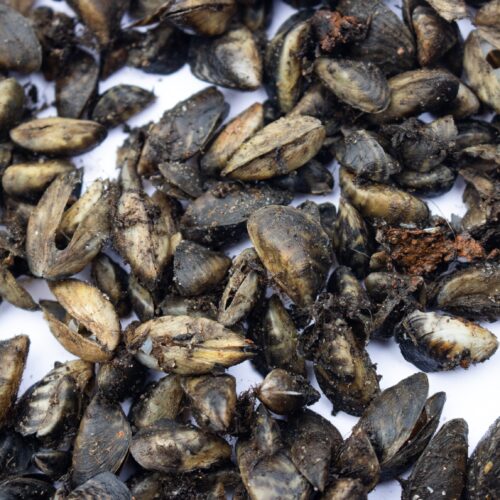
Inspectors find 21 gallons of invasive mussels on tugboat outside of Spokane
A close-up of the thumbnail-sized invasive quagga and zebra mussels found on a tugboat in January. (Credit: Washington Department of Fish and Wildlife) Read It was a close call along
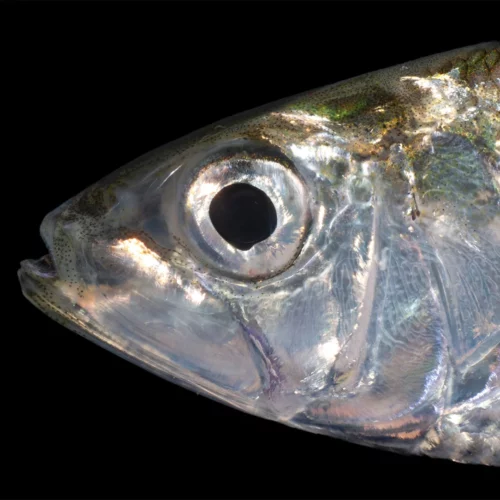
American shad clog fish ladders, causing trouble for salmon
In recent years, non-native American shad migrating past Bonneville Dam greatly outnumbered the total salmon and steelhead. (Credit: Smithsonian Environmental Research Center / Flickr Creative Commons) Listen (Runtime 1:10) Read

Sniffing out invasive mussels to protect Washington’s waters
Fin is about 4 years old and is a Catahoula leopard dog, blue lacy and Australian kelpie mix. He can inspect up to 140 boats per day. (Credit: Courtney Flatt

